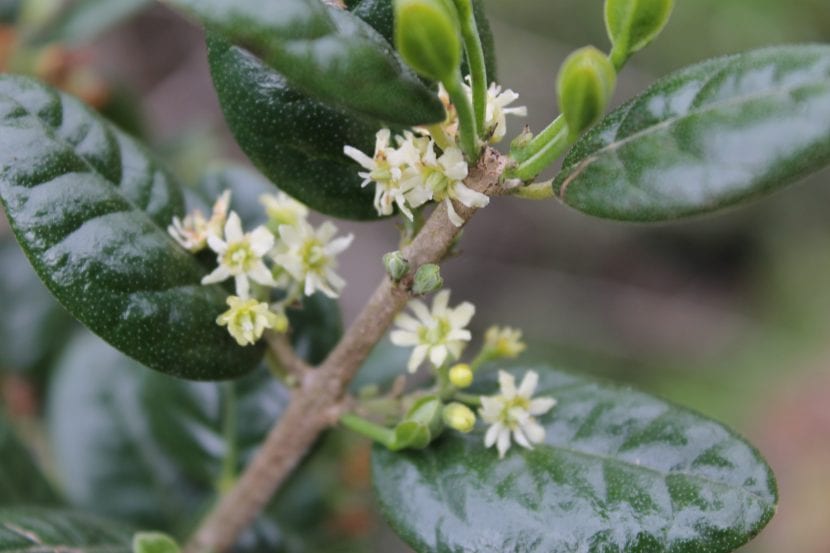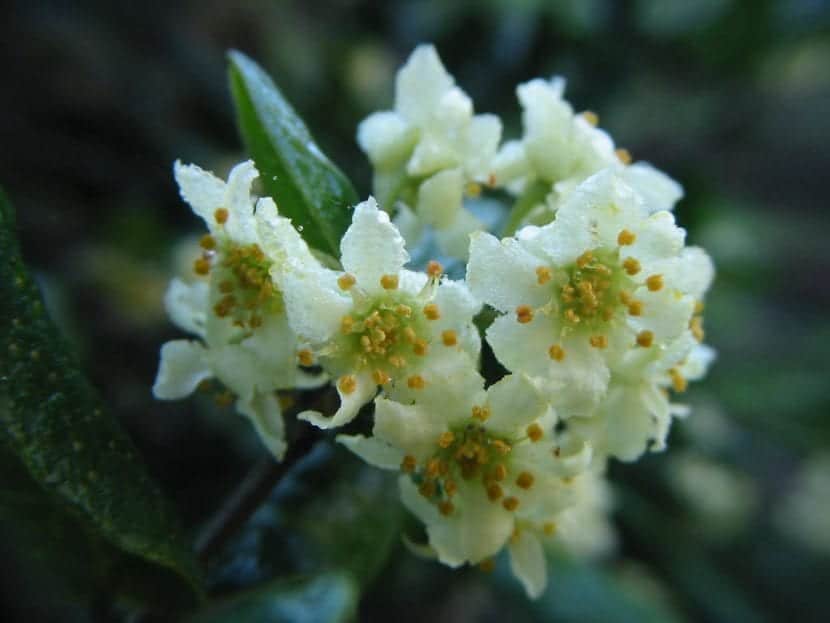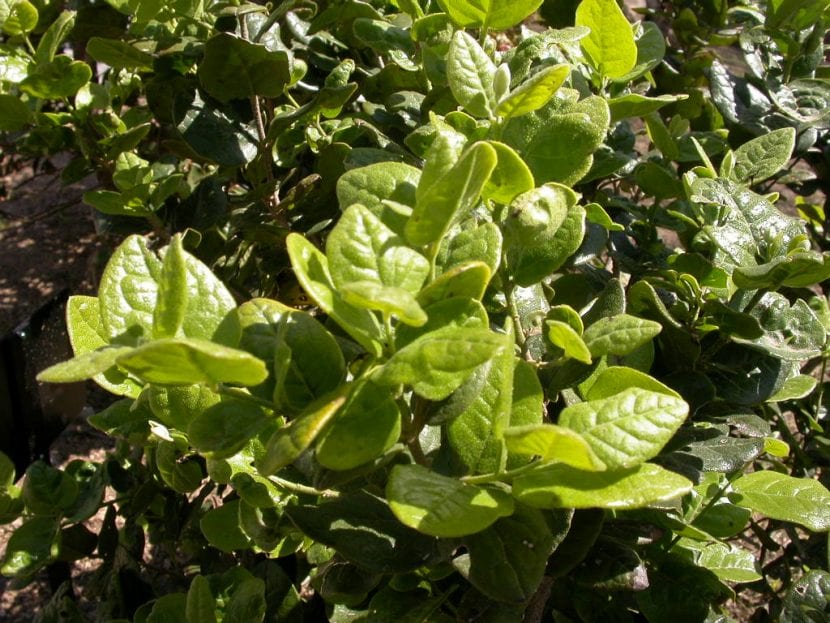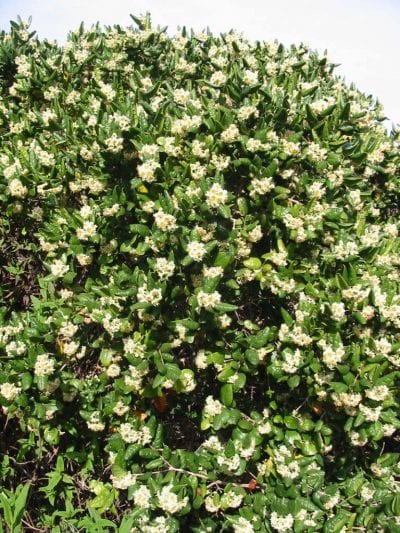
Image - Flickr / Patricio Novoa Quezada
It is always good to have plants with health benefits and that is why today we will dedicate ourselves to knowing the secrets of boldo, a tree whose scientific name is peumus boldus that allows to elaborate infusions that help to alleviate stomach problems.
Growing boldo is not a difficult task it is enough to know some of its characteristics. It is a plant with a mountainous and dry climate that adapts to both the sun and semi-shady places, and it will not give you any problems.
Origin and characteristics of boldo

Image - Flickr / Patricio Novoa Quezada
Our protagonist is an endemic evergreen tree from South America, specifically from central Chile, Argentina and Peru. It grows to a height of 15 meters, but having a rather slow growth rate (it can take several decades to reach that height) can be well controlled.
Its leaves are opposite, ovoid in shape, bright green in color, the underside being paler, and 3 to 7 cm long. It produces flowers grouped in whitish clusters, being able to be female or male appearing in different specimens since boldo is dioecious. The fruit is a small green drupe, about 2cm in diameter, with a sweet taste.
Boldo plant care
If you want to have a copy, we recommend you take care of it as follows:
Location
As we said at the beginning, it is a very adaptable plant, which can be both in full sun and in half shade. But it is important that you know that it is sensitive to strong frosts, so if the winter is very hard in your area you will have to protect it in a bright room or in a greenhouse.
Earth

Image - Wikimedia / Thelmadatter
- Garden: it needs an acid soil (pH 4 to 6), shallow and stony, with good drainage and rich in organic matter. In calcareous soils its leaves will turn yellowish due to the lack of iron; If that happens, water with iron chelate and fertilize from time to time with a specific fertilizer for these plants (for sale here).
- Flower pot: fill it with substrate for acidic plants (for sale here) mixed with a little pearlite (for sale here) or similar.
Irrigation
You have to be careful with watering because it is only necessary to conserve moisture. If the season is very dry then it will have to be increased. In general, you should water an average of 3 times a week during the summer, and 1-2 times a week the rest of the year.
If in doubt, check the humidity by inserting for example a thin wooden stick or a digital meter (for sale No products found.).
If you have it in a pot, another thing you can do is take it once watered and again after a few days, and thus check that the dry soil weighs less than the one that is just watered.
Subscriber
Taking into account that it is a plant with medicinal properties, it is advisable to fertilize with organic fertilizers throughout the growing season, that is, from spring to late summer or early fall if the weather is mild.
Multiplication

Image - Wikimedia / Simonjoan
The boldo multiplies by seeds and cuttings in spring. Let us know how to proceed in each case:
Seeds
- First, they are placed in a glass of water for 24 hours. The next day, separate those that have sunk from those that have not, since it will be those (the first) that will germinate in all probability.
- Then, fill a seedling tray (for sale here) with universal substrate and water conscientiously.
- Then, place a maximum of two seeds in each socket, and cover them with a thin layer of substrate.
- Finally, spray with fungicide in order to prevent fungi from appearing and place the seedbed outside, in semi-shade.
Keeping the substrate moist (but not waterlogged), they will germinate in about 15-30 days. You can transplant them as soon as you see the roots come out of the drainage holes.
Cuttings
To multiply it by cuttings you have to cut a semi-woody branch, impregnate its base with rooting hormones (for sale here) or with homemade rooting agents and plant it in a pot with vermiculite -for example- previously moistened.
Plagues and diseases
Among the most frequent pests and diseases of boldo are the aphids and some fungi, especially Phytopthora and mildew. You can remove the first ones with potassium soap (on sale here), diatomaceous earth (for sale here) or with yellow sticky traps; and the fungi are treated with fungicides, controlling the risks and not wetting the leaves or flowers.
Harvest
The boldo harvest takes place during the summer and is only about collect the leaves by hand and then dry them.
Rusticity
Boldo resists frosts of up to -7ºC as long as they are punctual and of short duration.

Boldo uses
Ornamental
It is a very decorative plant, which although it may be large, can also be grown in a pot or as a garden hedge.
Medicinal
Without a doubt it is the use that is given the most. The leaves are used to stimulate digestive functions, as a diuretic (in infusion), earache (juice), for gastrointestinal conditions, for rheumatism, migraine, migraine and also as a mild sedative.
Slimming properties of boldo
Boldo tea can help you lose weight, since accelerates metabolism, is anti-inflammatory, diuretic and helps eliminate toxins.
Boldo contraindications
All the pregnant women and those who suspect (or already know) that have gallstones should not take boldo under any concept. In addition, it must be known that in excess it turns out to be toxic, causing exaggerated reflections, breathing problems, great excitement and even death.
What did you think of this plant?
Thank you
Good morning:
I hope that for your sake you do not consume this Boldo, at least as Boldo, for the simple reason that it is not Boldo (Peumus boldus). The one in the photo is the Indian Boldo (Plectranthus barbatus), a toxic species. The taste of this fake Boldo is very bitter and has different properties. This one is very sensitive to frost.
In contrast, the true Boldo (Peumus boldus) has appreciable medicinal properties and has a rich minty and Eucalyptus flavor. It is a rustic shrub that supports the cold. All it requires is an acidic soil and it does not tolerate lime.
Hello François.
It is already corrected. Thanks.
Where would it be more advisable to leave the pot with the seeds? A place with a lot of, little light and what temperature approximately?
Hello Patricio.
In semi-shade, or with a lot of light it would be ideal.
As for the temperature, spring, between 15 and 25ºC.
Regards!
Hello, where can I get a boldo plant? Is there a nursery in Mar del Plata? Thanks
Hello Olga.
I can't tell you, I'm sorry. We are in Spain. But, have you looked at any online nursery? Or else on ebay or amazon they might sell.
Greetings.